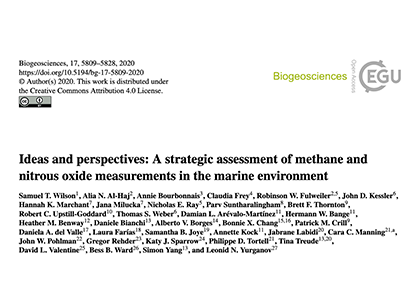A number of laboratories throughout the world measure dissolved methane (CH4) and nitrous oxide (N2O) to quantify their spatial and temporal distributions, determine the rates of production and consumption, and also derive emissions to the overlying atmosphere. To maximize the scientific value of these studies, dissolved CH4 and N2O measurements made by all laboratories should be intercomparable and of the highest possible accuracy and precision. An important component to achieving community-wide intercomparability for dissolved CH4 and N2O measurements is the production of Standard Operating Protocols (SOPs). The SOPs need to contain clear and agreed upon guidelines for achieving high quality measurements. This webpage lists seven draft SOPs for dissolved CH4 and N2O. Thanks to the efforts of several members of the trace gas community, draft SOPs for CH4 and N2O sampling, analysis, and data reporting are available for public comment from December 2020 to March 31, 2021. Please visit https://web.whoi.edu/methane-workshop/sops/ for more information.
New paper inspired by discussions at OCB workshop on oceanic methane and nitrous oxide: Ideas and perspectives: A strategic assessment of methane and nitrous oxide measurements in the marine environment
Wilson, S. T., Al-Haj, A. N., Bourbonnais, A., Frey, C., Fulweiler, R. W., Kessler, J. D., Marchant, H. K., Milucka, J., Ray, N. E., Suntharalingham, P., Thornton, B. F., Upstill-Goddard, R. C., Weber, T. S., Arévalo-Martínez, D. L., Bange, H. W., Benway, H. M., Bianchi, D., Borges, A. V., Chang, B. X., Crill, P. M., del Valle, D. A., Farías, L., Joye, S. B., Kock, A., Labidi, J., Manning, C. C., Pohlman, J. W., Rehder, G., Sparrow, K. J., Tortell, P. D., Treude, T., Valentine, D. L., Ward, B. B., Yang, S., and Yurganov, L. N.: Ideas and perspectives: A strategic assessment of methane and nitrous oxide measurements in the marine environment, Biogeosciences, 17, 5809–5828, https://doi.org/10.5194/bg-17-5809-2020, 2020.




